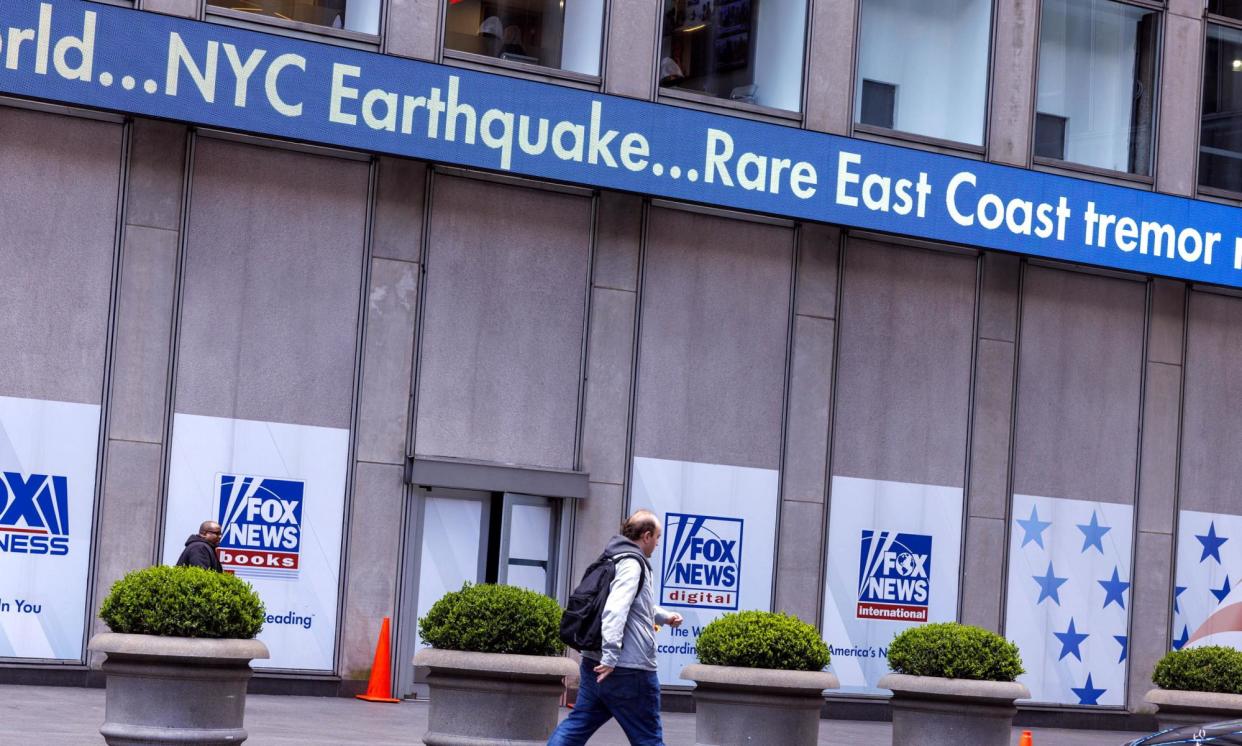Don’t stand in the door frame: what to do in an earthquake

Millions of people across the US east coast were jolted on Friday morning when a rare 4.8 magnitude earthquake struck the region.
With its epicenter in New Jersey, the temblor jostled densely populated areas where residents are less accustomed to earthquakes, including in the New York City metropolitan area. There are no early-warning systems in place for this region, unlike on the earthquake-prone west coast, where they give people a few moments to ready themselves before the shaking starts. On the east coast, fewer people have had practice or experience with what to do when an earthquake hits.
Related: ‘First time?’ Californians poke fun at New Yorkers’ frantic earthquake posts
Dangerous quakes can occur across the US, according to the USGS, but know-how and preparation can save lives. So what to do when the building starts swaying?
Decades of research and aftermath recovery have informed the official protocol: “Drop, cover and hold on”.
People have long believed they should rush to a door frame, but that advice is outdated and only applied before building codes were improved. “People worry about structural collapse but it’s really all the shelves and books and TVs and the non-structural components that pose a bigger hazard for human health,” Dr Scott Brandenberg, an earthquake engineer and professor at UCLA, said.
The first thing to do is to get on to your hands and knees – the position that is best to ensure you won’t be knocked over or hit by falling objects. Next, protect your head and neck with one arm and hand. If possible, the best thing to do is to find something sturdy you can climb underneath, close to where you are. That can be your desk if you are working or a table at a coffee shop, or, if that’s not an option, brace yourself next to an interior wall. Then, using the hand not covering your head and neck, grab on to the table leg and be ready to stick with that structure even as it sways.
“The idea is you are trying to protect yourself from things that can fall on you,” said Dr William Yeck, a research geophysicist with the USGS National Earthquake Information Center. “People get injured when they try to move around during shaking so it’s good to just hold tight and wait for the shaking to finish.”
For those in a wheelchair, officials advise locking the wheels, getting as low as possible, and covering your head and neck when your arms and holding on until the shaking stops.
“First things first: if you feel an earthquake, resist the urge to run outside,” the California Earthquake Authority wrote in a post about best practices. Shattering windows, debris falling from buildings, and downed trees and powerlines can pose real dangers, in addition to the potential harm from falling while the ground shakes.
Related: New Yorkers keep their cool after rare earthquake: ‘Definitely weird’
Experts are hoping Friday’s quake left a lasting mark on the minds of those who felt it, and serves as a wake-up call for people to educate themselves about safety and preparedness.
“This is a fantastic learning opportunity,” said Yeck. “It put earthquakes on people’s minds so they know they should be prepared for earthquakes and they should know what to do when they feel shaking – which is to drop, cover and hold on – but it was small enough where it didn’t have a large impact.”
The earthquake was also a helpful indicator that will help scientists better map and understand future risks. Though earthquakes in the east are less common than in the west, they aren’t unheard of. Temblors damaged New York City in 1737 and in 1884, according to the USGS, and moderately impactful shaking strikes “somewhere in the urban corridor roughly twice a century”, the agency said in an analysis published on Friday morning.
“The urban corridor is laced with known faults but numerous smaller or deeply buried faults remain undetected. Even the known faults are poorly located at earthquake depths,” the USGS said, adding the best guide to earthquake hazards in this area “is the earthquakes themselves”.

 Yahoo News
Yahoo News 
